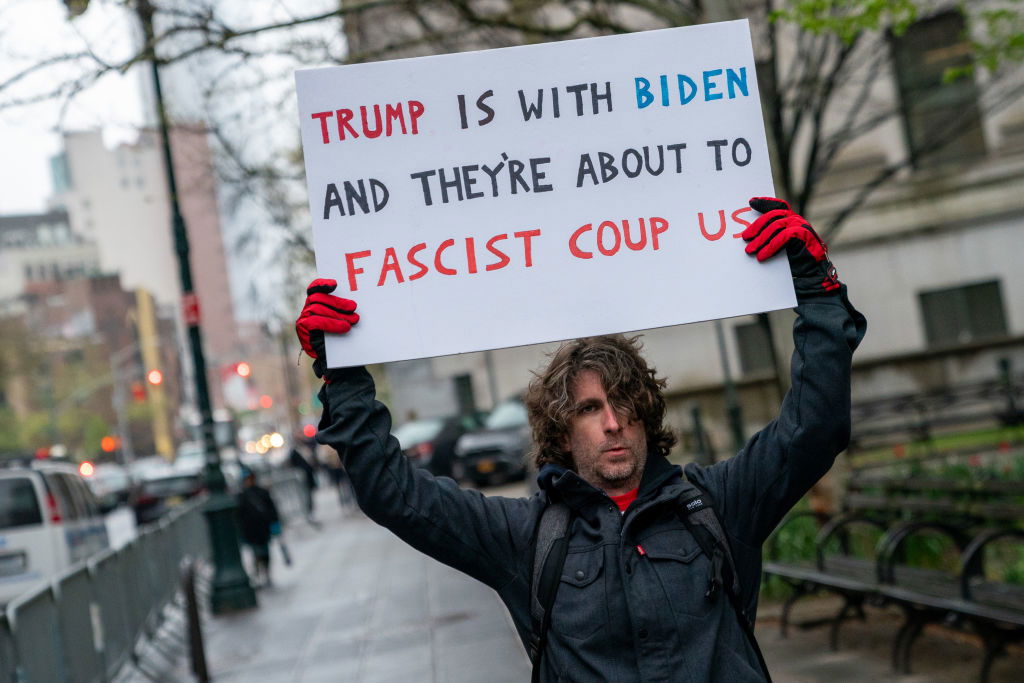
January 18, 2025
Trump Protests Not What They Were In 2017
There are an expected 50,000 participants in the People's March, a number that pales in comparison to the 500,000 that showed up to Trump’s last inauguration ceremony.
As President-elect Donald Trump’s inauguration grows closer, changes in how the largest of his opposition protests will show up offers a glimpse into how that particular movement, and in large part, resistance to Trump in general, has changed since 2017.
According to The Hill, there are an expected 50,000 participants in the People’s March, a diverse coalition of groups that include the Women’s March; while this number is nothing to thumb your nose at, it pales in comparison to the 500,000 that showed up to Trump’s last inauguration ceremony.
Tamika Middleton, the managing director of the Women’s March, told the outlet that several factors contributed to this.
“A lot of things are different,” Middleton began. “Our work as organizations this time around has been not to capture the energy of all these people who are being activated, but this time actually, our work has been to keep people from being demobilized, to keep people engaged and to give people something to hope for.”
This position was also supported by comments from Keya Chatterjee, a co-founder and executive director of Free DC, a group that is using the visibility of the inauguration to launch at the People’s March.
“I see, actually, more energy than I’ve ever seen,” Chatterjee told The Hill. “But it’s not just to do the same thing again that took us to where we were. It’s actually to learn and do better, and this time, I think that we know what it takes, which is, frankly, you know…it is, yes, to gather at protests sometimes, but it makes more sense for us to do that in ways that build our community and that are focused on our community.”
Kelly Dittmar, the director of research and a scholar at the Center for American Women and Politics at Rutgers University, sees in her analysis how women are fractured and splintered, which comes as no surprise given the 53% of white women who voted for Trump in 2017, and exit polling from the 2024 election that suggested that Black women were let down by their Asian and Latinx contemporaries.
“The idea that there’s not one singular women’s movement or set of agendas — a set of priorities among all women, so it makes it hard to engage in collective action among all women as an entity or as an identity,” Dittmar said. “And so I think that you know that that complexity is probably reflected in the People’s March, right, vs. the Women’s March, and also, more generally, just kind of how women will organize.”
She also noted that “a lot of advocates and activists are already exhausted.”
Dittmar continued, “I think there are activists and advocates who, you know, might be mobilized by Donald Trump’s election, but don’t see this particular march…as the most effective way to push back.”
This somewhat fractured vision of how to protest or resist Trump 2.0 is reflected in the broader Democratic political structure.
Some Democrats, like California Gov. Gavin Newsom, have held themselves out as a resistance force to Trump, while others, like Michigan Gov. Gretchen Whitmer and Maryland Gov. Wes Moore, have signaled a willingness to work with Trump, but say they will break with him when necessary.
According to Democratic pollster Anna Greenberg, the latter position is a vain one; what is necessary, in her opinion, is party unity.
“I think it’s a fairly meaningless thing to say, since we have no idea what Trump’s going to do,” Greenberg said. “I do think that for the next two years in particular, what we need is actually a lot of party unity, and, in particular, in the House. And so far, I’ve seen it.”
RELATED CONTENT: And So It Begins: Several U.S. Cities Protest ‘Racist Clown’